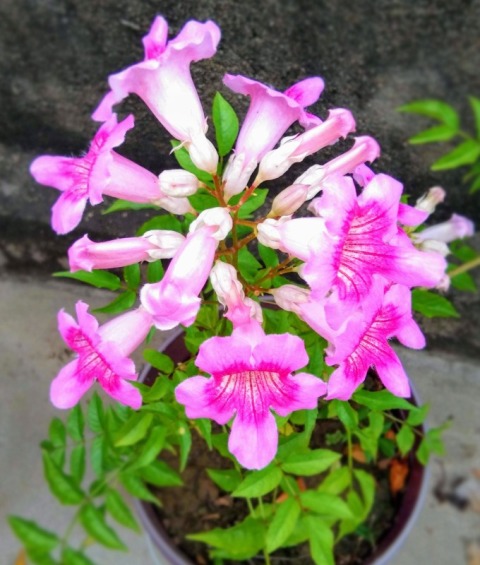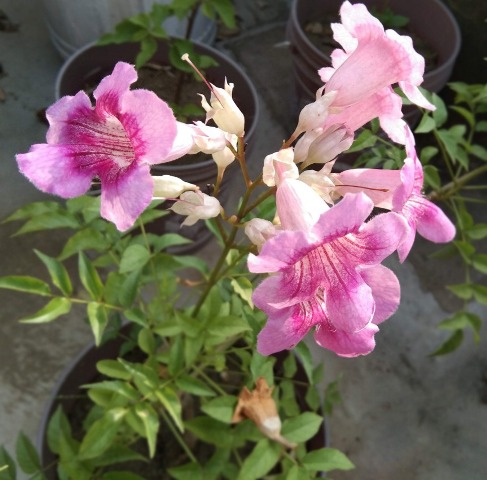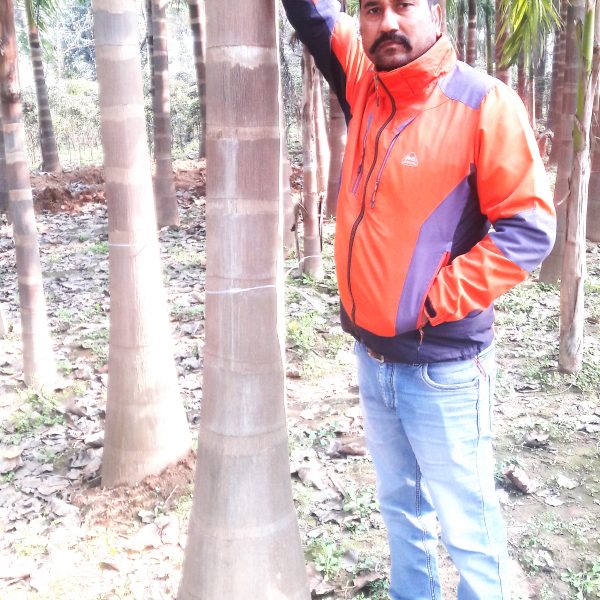You can purchase it from any nursery or propagate through seeds or by cuttings.
Seed Germination
Tecoma pink is an abundant seed producer. Collect mature dry seeds. Seeds from the plant don’t require special care and may be stored for several months before planting.
For germination set the dried seeds in germination try or any garden containers fill with rich sand (60%) base soil potting mix. Cover seeds lightly with the medium.
Now give water in planting medium. After than place the try or container in indirect light. Keep it moist but not wet well until sprouts out. Seeds will germinate in 2 to 3 weeks.
Propagation by CuttingIf you want to propagate it from cuttings than take 4 to 5 inches long woody shoots in spring. Cut the shoots just below the nodes. Cutting must contain 2 to 4 leaves.Use rooting medium like IBA (Indole butyric acid) powder to induce roots in cuttings.
Use 5 to 6 inches diameter containers to develop seedlings. Use potting mix like 60% loamy soil+ 30% sand + 10% coco peat.Pour Potting mix into the containers and water high before transplanting cuttings into the soil. Wash cuttings in low concentrate broad-spectrum fungicide or by freshwater.
Now dip cuttings in rooting medium and transplant it in the potting medium by making a hole by pencil tips. Place 3 to 5 cuttings in potting medium and cover it with transparent polythene and put it under the semi-shade area.Apply water in the soil medium regularly to keep it moist but take care not to overwater your plant pots. Cuttings will start to develop new roots within 2 to 4 weeks.
Transplant the seedling to an outdoor location or garden container after the new plants have reached 6 to 12 inches tall.
Light requirement
Tecoma pink requires full sun exposure. A very bright light is required up to 5 hours of direct sunlight per day. When there is a lack of sunlight, the flowering is weakened.It is advisable to ensure good lighting for this plant. Shades reduce flowering and encourage undesirable shape and drastic defoliation.
Water Requirement
Potted Tecoma pink need regular watering from spring to late summer. Allow the soil to dry out slightly between watering. The amount of water needed depends on the environmental conditions, size of plant and pot size.
In winter reduce watering frequency, especially at low temperatures.
Fertilizer requirement
This plant does not require abundant fertilizer. Use NPK (10:26:26) ¼th teaspoon in a month during the growth period. You may also use any organic fertilizer once every two months.
Avoid fertilizing during the rest period in autumn and winter.
Pruning
The size of the plant can be controlled by pruning and by doing so more branching will come out and thereby more blooming occurs.
Flowers are born on new growth, so pinch back and pruning is necessary to induce new growth. Pruning should be done after flowering has finished, as it encourages the new growth on which the next flush of flowers will occur.
Transplant the plant annually, gradually increasing the size of the pot as per the growth of the Tecoma plant.
Cut off old, damaged, or dead branches at their base and remove them. Do this in the spring season before new growth in the plants occur.This Plant is resistant to pests. Sometimes insect pests like spider, mite, whitefly, scab can infect use 5% Neem oil as a foliar spray.
Benefits Of Tecoma Pink
Tecoma pink is an ornamental plant found throughout India. Pink Tecoma has been grown as a street, parking lot, and ornamental tree in Hawaii.
In the West Indies, where it is native, the wood is harvested for timber.
Preparations of the bark of the tree are consumed to eliminate intestinal parasite, malaria, and uterine cancer. A decoction of plant flowers, leaves, and roots are used to reduce fever and pain.
Try growing Tecoma Pink in your home garden by following instructions given on Agriculture Review. Don’t forget to share your experience and comment below if you have any queries.
The information given in this article has been shared by Mr. Sital Sarkar through Agriculture Review.









Reviews
There are no reviews yet.